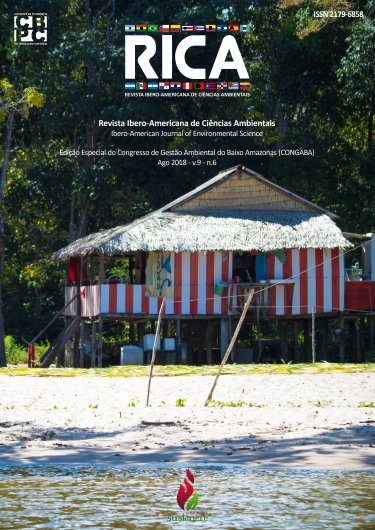Thermal discomfort during the dry season in a tropical rainy city in the Amazon
DOI:
https://doi.org/10.6008/CBPC2179-6858.2018.006.0018Keywords:
Thermal sensation, Santarém, Urban climateAbstract
The evaluation of the thermal sensation in Santarém is important due to the recent physical expansion and population growth. Santarém is the third largest city (in size and population) of Pará state. High air temperatures and relative humidity throughout the year characterize the equatorial climate. It is also associated with diurnal temperature variations that may interfere in the thermal comfort of the urban environment. Therefore, the thermal comfort was tested using four models in order to obtain the local thermal response. This study is focused on the dry season of 2016 (from July to November) with the use of data from the surface automatic meteorological station of Santarém. The results obtained indicate that, for open environment, from 11am to 6pm the thermal sensation varies from uncomfortable to extremely uncomfortable. From 2pm to 5pm the index represent a very hot sensation with problem in the body thermoregulation and extreme caution. These thermal sensations are associated with highest air temperature values around 31°C and relative humidity lower than 60%. Understanding the current thermal sensation in Santarém and the critical periods is important for prevention to exposure in open environments, and may contribute for notifying the society and public authorities.The assessment of thermal sensation in Santarém is important due to the recent physical and population expansion of the city. Santarém is the third largest city in Pará, both in size and population. The Equatorial climate, characterized by high air temperature and relative humidity throughout the year, associated with daytime temperature variations, even small, may represent important changes in the thermal comfort / discomfort of the urban environment. In this sense, the hourly thermal comfort was tested through four models capable of returning the local thermal response, focused in this study in the dry season of 2016 (July to November), using data from the Santarém automatic surface weather station. Among the results we can highlight that, in the interval from 11 am to 6 pm, in an open environment, the thermal sensation varies from uncomfortable to extremely uncomfortable. Between 14 and 17h, the indices indicate very hot sensation with body thermoregulation failure and extreme caution, these thermal sensations are associated with the maximum air temperature around 31 ° C and relative humidity below 60%. Understanding about the current thermal sensation in Santarém and the most critical hours, serve as a subsidy for measures to prevent exposure to open environments, as well as the possibility of issuing warnings to society and the public authorities.
Downloads
Downloads
Published
Issue
Section
License
The CBPC - Companhia Brasileira de Produção Científica (Brazil CNPJ: 11.221.422/0001-03) the material rights of the published works. The rights relate to the publication of the work anywhere in the world, including rights to renewals, expansions and dissemination of the contribution, as well as other subsidiary rights. All electronically published works may subsequently be published in printed collections under the coordination of this company and / or its partners. The authors preserve the copyright, but are not allowed to publish the contribution in another medium, printed or digital, in Portuguese or in translation.









